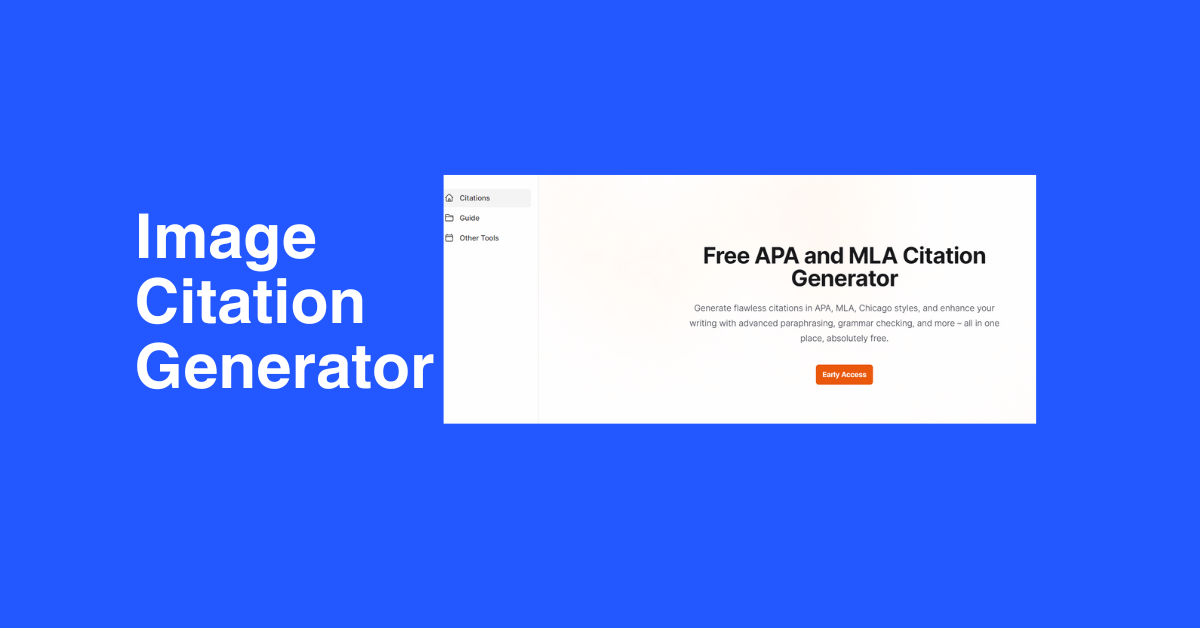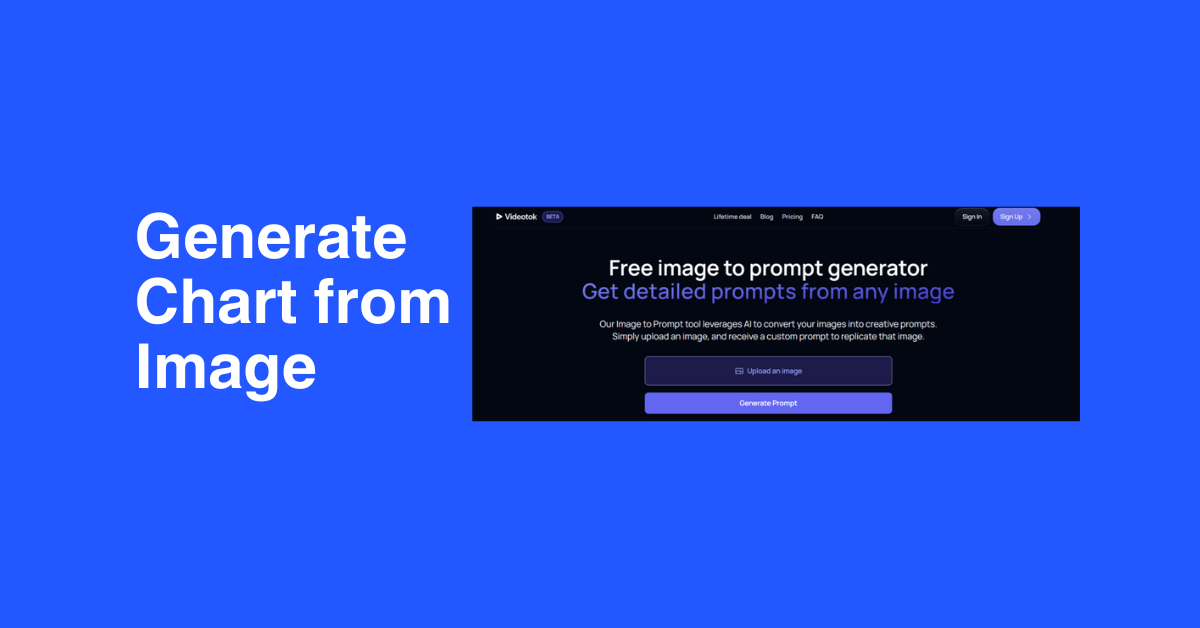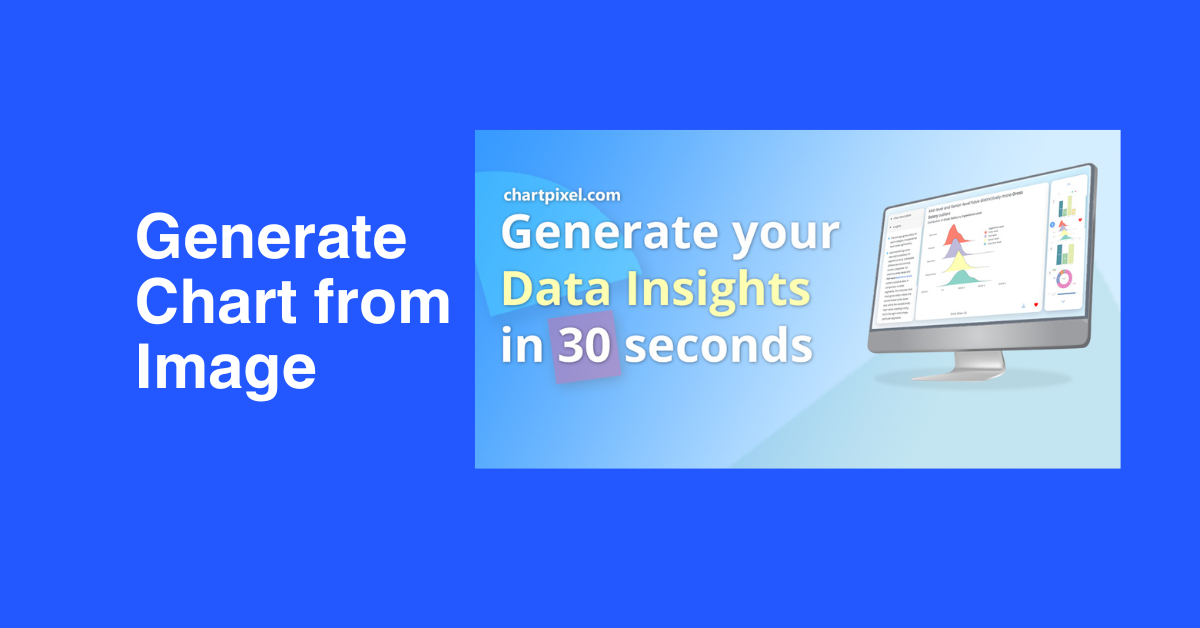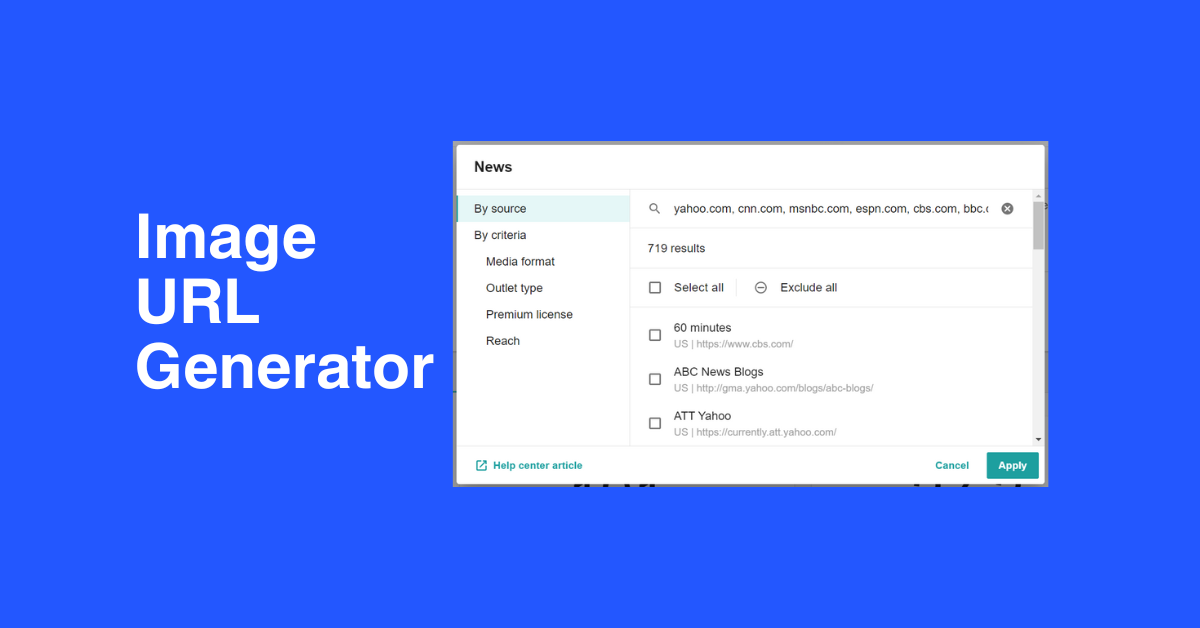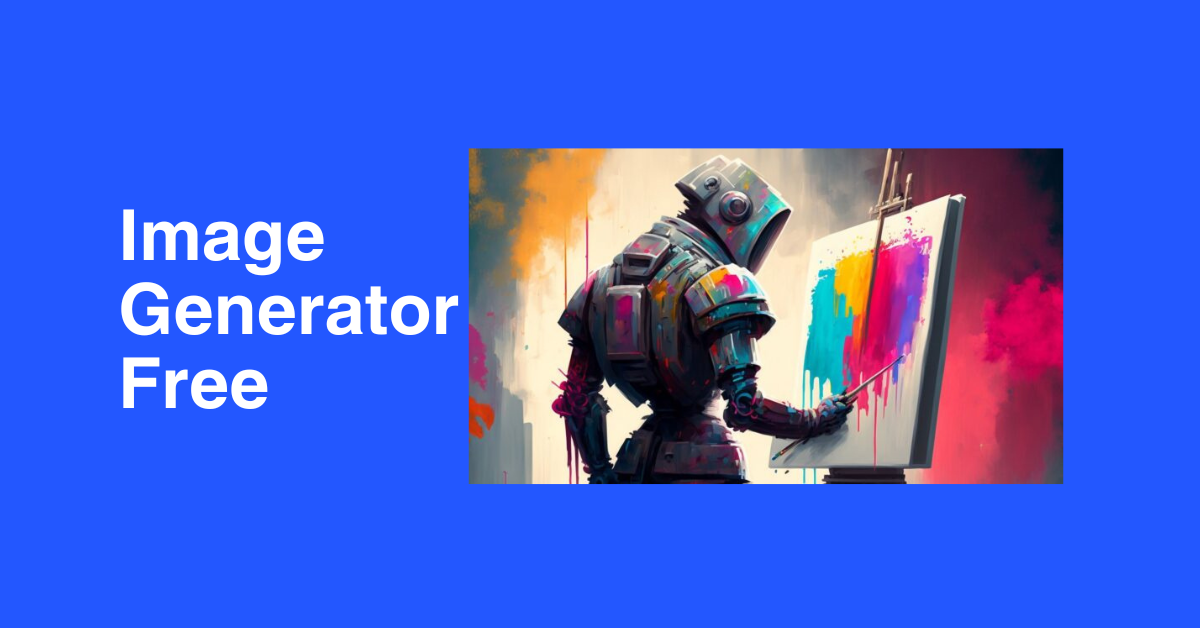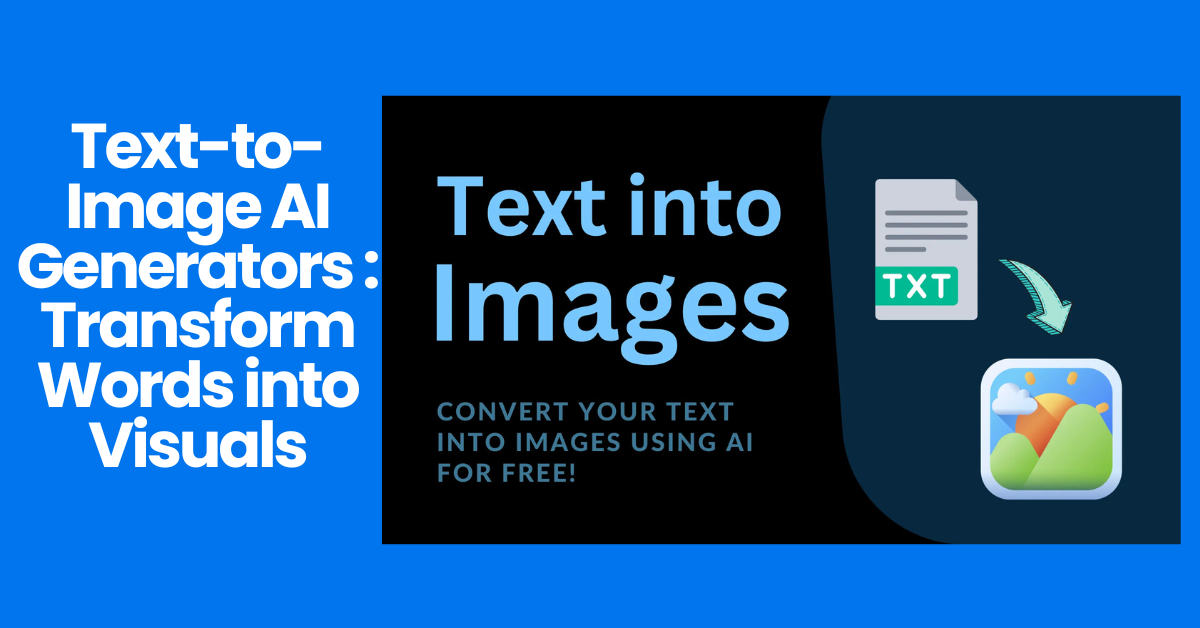
Text-to-Image AI Generators: Transform Words into Visuals
- Image Generators
- November 5, 2024
- No Comments
In the age of digital transformation, our ways of creating and consuming content have seen dramatic changes. Among these innovations, Text-to-Image AI Generators stand out as a game-changer in how we visualize ideas and concepts. These advanced tools enable users to input textual descriptions and generate stunning visual representations with remarkable accuracy. As we dive deeper into this fascinating technology, we will explore its workings, compare leading platforms, uncover its creative potential, assess ethical implications, and speculate on its future. Join us on this journey through the revolutionary world of text-to-image AI.
Understanding the Power of Text-to-Image AI: How it Works and its Capabilities
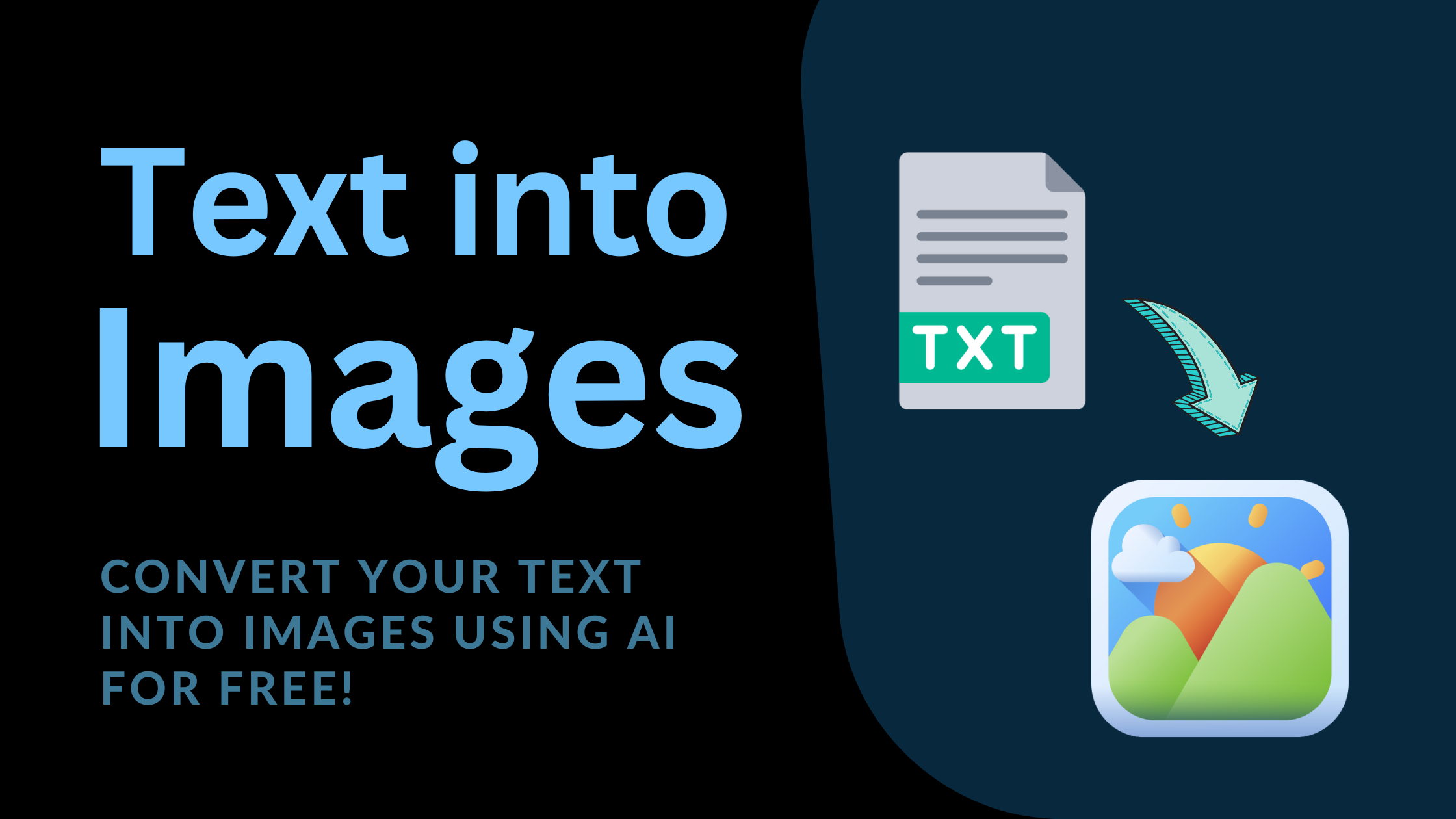
The emergence of Text-to-Image AI Generators springs from an amalgamation of natural language processing and deep learning techniques. At their core, these generators operate using sophisticated algorithms that analyze text inputs and convert them into coherent images. This section will delve into the intricacies of how this technology functions and what capabilities it offers.
The Mechanics Behind Text-to-Image AI
To grasp the mechanics of Text-to-Image AI Generators, one must first understand the components that contribute to their functionality. Most text-to-image models utilize a two-step process: encoding and decoding.
During the encoding phase, the AI ingests and interprets the textual description provided by the user. Utilizing natural language processing techniques, the model dissects the sentence structure, semantics, and context of the input text. This understanding is pivotal, as the AI needs to extract essential elements such as objects, colors, emotions, and actions.
The decoding phase involves generating a visual representation based on the encoded information. Through a series of neural networks, particularly convolutional neural networks (CNNs), the system constructs an image that aligns with the user’s description. Over time and with countless training datasets, these models have learned to produce increasingly intricate images, achieving a level of realism that can sometimes be indistinguishable from human-created art.
Capabilities of Text-to-Image AI Generators
While the basic premise of Text-to-Image AI Generators may seem straightforward, the capabilities of these generators are vast and varied. Today’s models can create images across multiple styles—from hyper-realistic portraits to abstract representations.
One remarkable capability is the generator’s ability to grasp intricate details of a scene. For instance, if a user requests an image of “a serene lake surrounded by autumn trees with a sunset in the background,” the AI can meticulously render each component based on its understanding—capturing the warm hues of the sunset, the rustling leaves, and the tranquil waters.
Moreover, advancements in machine learning have led to the development of conditional image generation, where users can specify parameters such as style, mood, or even color palette. This flexibility empowers creators to experiment and tailor their images to fit specific narratives or branding strategies.
The Role of Datasets in Training AI Models
The quality and diversity of the datasets used to train Text-to-Image AI Generators play a crucial role in determining the effectiveness and versatility of the generated images. High-quality datasets comprise millions of labeled images paired with descriptive texts. Well-known models like OpenAI’s DALL-E and Google’s Imagen rely heavily on extensive datasets to learn the relationships between visual elements and linguistic descriptors.
Diversity in datasets is equally important. When trained on a wide range of subjects and styles, AI models become proficient in generating images across various themes and disciplines. However, challenges remain, particularly when it comes to representing niche subjects or culturally specific imagery.
In conclusion, understanding the mechanics and capabilities of Text-to-Image AI Generators reveals just how transformative this technology can be for artists, marketers, and everyday users alike. With ongoing research and refinement, we can expect even more significant advancements in the realm of visual content creation.
Top Text-to-Image AI Generators: A Comprehensive Comparison
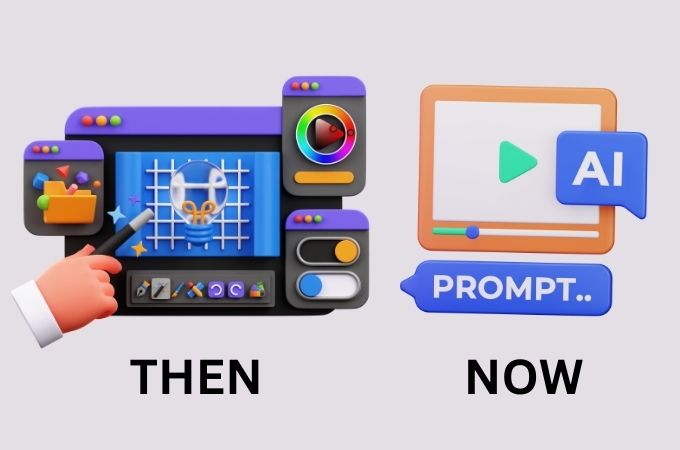
With numerous Text-to-Image AI Generators available today, selecting the right one can be daunting. Each platform comes equipped with unique features, strengths, and weaknesses. In this section, we will provide a comprehensive comparison of some of the leading text-to-image AI generators currently on the market.
DALL-E: Pioneering Creativity
DALL-E, developed by OpenAI, has garnered attention for its innovative approach to image generation. This model gained popularity after showcasing its ability to produce surreal and imaginative images based solely on textual prompts.
One of DALL-E’s standout characteristics is its capacity to create fantastical scenarios, allowing users to combine seemingly unrelated ideas seamlessly. For example, one might input “an armchair in the shape of an avocado,” and DALL-E would generate a captivating visual representation that balances creativity and coherence.
Additionally, DALL-E supports various image formats, from illustrations to photorealistic creations, providing flexibility for different use cases. Its strength lies in producing distinctive and original compositions, making it a favorite among artists and designers seeking inspiration.
Midjourney: Emphasis on Artistry
Midjourney has emerged as a robust contender in the Text-to-Image AI Generators landscape, focusing predominantly on artistic expression. Unlike DALL-E, which emphasizes creativity and imagination, Midjourney leans towards generating compelling and visually appealing artworks.
Midjourney employs a unique style transfer mechanism, enabling users to apply specific artistic styles to their generated images. This feature allows creators to explore various aesthetics, from impressionism to contemporary art, giving their works a personalized touch.
The community aspect of Midjourney also sets it apart. Users can share their creations and collaborate on projects, fostering a supportive environment for experimentation and growth. This sense of community encourages individuals to push boundaries and refine their artistic skills while utilizing AI-generated imagery.
Stable Diffusion: An Open-Source Alternative
Stable Diffusion stands out as an open-source Text-to-Image AI Generators that democratizes access to advanced image generation capabilities. While proprietary models often come with usage restrictions, Stable Diffusion empowers users to customize and fine-tune their own models according to their specific requirements.
This platform excels in producing high-quality images even with limited computing resources, making it accessible to a broader audience. Moreover, due to its open-source nature, developers can integrate Stable Diffusion with other applications, further enhancing its versatility.
Users can leverage Stable Diffusion’s capabilities for diverse projects, ranging from illustrations for children’s books to product mockups. The flexibility and adaptability of this tool position it as an invaluable resource for professionals and hobbyists alike.
Comparing User Experience and Accessibility
When choosing a Text-to-Image AI Generators, one must also consider user experience and accessibility. Some platforms offer intuitive interfaces that require minimal technical knowledge, while others may necessitate familiarity with programming languages or AI frameworks.
DALL-E and Midjourney generally prioritize user-friendly experiences, providing easy onboarding processes and streamlined workflows. On the other hand, Stable Diffusion, being open-source, may appeal to tech-savvy users who enjoy customization options but could pose a steeper learning curve for newcomers.
Ultimately, the choice of generator depends on individual preferences, project requirements, and desired outcomes. By comparing the strengths and weaknesses of these top contenders, users can make informed decisions that align with their creative goals.
The Creative Potential of Text-to-Image AI: Beyond Simple Images

As we delve deeper into the realm of Text-to-Image AI Generators, it’s imperative to recognize their creative potential that extends far beyond mere image creation. These tools offer a wealth of opportunities for artists, marketers, educators, and various industries to revolutionize their approaches to visual storytelling.
Sparking Inspiration for Artists
For artists, text-to-image AI can serve as a powerful source of inspiration. When faced with creative blocks or the need for fresh ideas, artists can input descriptive phrases or concepts into these generators, allowing the AI to produce novel interpretations.
This collaborative process fosters experimentation and exploration, encouraging artists to step outside their comfort zones. By analyzing AI-generated images, artists may discover new avenues for expression or incorporate elements into their existing work, enriching their creative repertoire.
Moreover, the serendipitous nature of AI-generated imagery can lead to unexpected outcomes that challenge traditional artistic conventions. The juxtaposition of disparate concepts can inspire fresh narratives and provoke thought within the artistic community.
Revolutionizing Marketing Strategies
In the marketing domain, Text-to-Image AI Generators can streamline content creation, enabling brands to produce visually captivating assets at unprecedented speeds. From social media posts to advertisements, marketers can quickly generate tailored visuals that resonate with target audiences.
Additionally, these generators can assist in the conceptualization of branding elements. For instance, businesses can input brand values and target demographics, prompting the AI to create logos or promotional materials that embody their vision.
Furthermore, rapid prototyping becomes achievable with text-to-image AI. Marketers can iterate on visual concepts, gathering feedback before committing to final designs. This agility enhances collaboration between design and marketing teams, ensuring that campaigns align with brand identity and customer expectations.
Enhancing Educational Materials
In educational settings, Text-to-Image AI Generators hold great promise for enriching instructional content. Educators can transform complex topics into engaging visuals, aiding comprehension and retention.
For example, when teaching about ecosystems, an educator can input descriptive text to generate illustrative diagrams, showcasing interdependent relationships within a habitat. Such visuals can cater to diverse learning styles, making education more inclusive and effective.
Furthermore, these generators can facilitate collaborative learning experiences. Students can engage with AI tools to create visual projects that articulate their understanding of specific subjects, promoting creativity and critical thinking.
Bridging Cultural Gaps
Text-to-image AI also has the potential to bridge cultural gaps by facilitating cross-cultural exchanges. Creatives and storytellers from varying backgrounds can input culturally relevant phrases or symbols, prompting the AI to generate images that reflect diverse perspectives.
By utilizing AI-generated content, creatives can explore and celebrate cultural nuances, fostering appreciation for global diversity. This avenue promotes inclusivity and encourages dialogue around creativity and representation.
In summary, the creative potential of text-to-image AI generators transcends simple image generation. By acting as catalysts for inspiration, efficiency, and inclusivity, these tools can reshape the creative landscape across multiple domains, offering limitless possibilities for expression and innovation.
Ethical Considerations and Potential Risks of Text-to-Image AI
As with any emerging technology, the rise of text-to-image AI generators brings forth a host of ethical considerations and potential risks that warrant careful examination. While these tools offer incredible opportunities for creativity, they also raise important questions about ownership, authenticity, and bias.
Ownership and Copyright Issues
One of the foremost ethical concerns surrounding text-to-image AI is the question of ownership and copyright. When a user inputs text and receives a generated image, who holds the rights to that artwork? This ambiguity can lead to disputes between users, developers, and content platforms.
Currently, many AI-generated images fall into a legal gray area. Although the creator has provided the initial input, the AI generates the image autonomously. Legal frameworks have yet to catch up with these advancements, resulting in uncertainty regarding intellectual property rights.
Moreover, the possibility of AI-generated content infringing upon existing copyrights adds another layer of complexity. If an AI model is trained using copyrighted material without consent, this raises ethical dilemmas concerning fair use and derivative works.
Authenticity and Attribution
The issue of authenticity also looms large in discussions surrounding text-to-image AI generators. As these tools become more prevalent, differentiating between human-created and AI-generated artwork becomes increasingly challenging.
This blurring of lines raises questions about the value of artistry and creativity. Will AI-generated art diminish the appreciation for human craftsmanship, or will it coexist as a complementary form of expression? The conversation around authenticity requires thoughtful consideration, as the proliferation of AI-generated content may shift societal perceptions of art itself.
Attribution is another concern. Who should receive credit for the artwork created using AI? Should it be the user who composed the prompt, the developer of the AI model, or perhaps both? Establishing clear guidelines for attribution will be essential to ensure fairness and transparency.
Bias and Representation
Another pressing ethical issue involves bias within AI-generated imagery. Machine learning models learn from historical data, which may inherently reflect societal biases and stereotypes. Consequently, text-to-image AI generators can inadvertently reproduce harmful narratives, reinforcing prejudices associated with race, gender, or culture.
Addressing bias in AI-generated content is vital to promote equitable representation and avoid perpetuating discriminatory practices. Developers must prioritize diverse training datasets and implement stringent evaluation criteria to mitigate biases effectively.
Additionally, users need to cultivate awareness of the potential biases present in generated images. By exercising critical thinking and questioning the visual outputs, individuals can take steps to foster a more conscientious approach to content creation.
Addressing Ethical Concerns
To navigate the ethical complexities of Text-to-Image AI Generators, stakeholders must engage in ongoing conversations about best practices, regulations, and strategies for responsible usage. Developers, artists, and consumers all play crucial roles in shaping the landscape of AI-generated content.
Establishing clear standards for ownership and attribution can aid in resolving disputes and fostering collaborative relationships between creators and technology providers. Additionally, incorporating ethics into the design of AI systems encourages accountability and promotes user trust.
Public awareness campaigns can also help educate users about the potential risks associated with AI-generated content. By empowering individuals with knowledge, society can collectively navigate the evolving terrain of AI technology.
In conclusion, while the rise of Text-to-Image AI Generators presents exciting opportunities for creativity, it also necessitates careful consideration of ethical implications. By proactively addressing ownership issues, authenticity, and bias, we can harness the full potential of AI-driven content creation while maintaining integrity and accountability.
The Future of Text-to-Image AI: Advancements and Predictions
As we look ahead, the future of Text-to-Image AI Generators appears promising and full of potential. Ongoing research and technological advancements are set to reshape the landscape of visual content creation, unlocking new possibilities for creators across various industries. In this section, we will explore key advancements on the horizon and predictions for the evolution of text-to-image AI.
Continuous Learning and Adaptability
One significant advancement in the future of Text-to-Image AI Generators will be the implementation of continuous learning mechanisms. Current models typically rely on static datasets for training, limiting their ability to adapt to new trends, styles, and cultural contexts.
In the coming years, we can expect AI generators to evolve into dynamic systems that continuously learn from user interactions and emerging data sources. This adaptability will enhance the relevance and timeliness of generated images, enabling creators to keep pace with shifting aesthetic preferences and societal shifts.
Furthermore, continuous learning models may possess the ability to personalize outputs based on individual user preferences. By analyzing previous interactions and feedback, AI could curate tailored visual experiences that resonate with specific audiences, fostering deeper connections between creators and their viewers.
Enhanced Collaboration Between Humans and AI
Rather than replacing human creativity, Text-to-Image AI Generators are likely to foster enhanced collaboration between humans and machines. As these tools become more sophisticated, they can serve as co-creators that amplify human creativity rather than diminish it.
In this collaborative framework, artists and designers can use AI-generated imagery as a jumping-off point, building upon the foundation laid by the AI to create unique works that blend human intuition with machine-generated insights. This synergy can unlock fresh avenues for creativity, pushing boundaries and expanding artistic horizons.
Moreover, industries such as fashion, architecture, and product design may leverage AI-generated content to streamline ideation processes. By integrating AI tools into their workflows, professionals can accelerate design iterations, gather feedback, and arrive at innovative solutions more efficiently.
Democratization of Creativity
As Text-to-Image AI Generators become more accessible, we anticipate a democratization of creativity, where individuals from diverse backgrounds can express themselves visually without requiring extensive artistic training.
These tools will empower non-artists, hobbyists, and entrepreneurs to bring their visions to life, enriching the landscape of visual storytelling. The barriers surrounding traditional art forms may dissolve, fostering a culture of creativity that celebrates individual voices and perspectives.
Social media platforms and online communities will likely thrive as spaces for sharing and showcasing AI-generated content. This exchange of ideas and collaboration among creators will catalyze new movements and trends, ultimately transforming the art world.
Ethical Frameworks and Responsible Development
As the future of Text-to-Image AI Generators unfolds, addressing ethical considerations will remain paramount. Developers will need to prioritize responsible practices that prioritize fairness, inclusivity, and transparency.
We may witness the establishment of industry-wide ethical frameworks that guide the development and usage of AI-generated content. These frameworks could encompass guidelines for ownership, attribution, bias mitigation, and user education, contributing to a more accountable ecosystem.
Collaborative efforts between tech companies, policymakers, and advocacy groups will be essential to establish regulations that promote ethical standards while fostering innovation. By prioritizing ethical considerations, we can navigate the complexities of AI technology responsibly.
In conclusion, the future of text-to-image AI generators promises to be transformative, driven by continuous learning, enhanced collaboration, and a democratized creative landscape. By embracing responsible practices, we can harness the power of AI to enrich visual storytelling and empower individuals across the globe.
Real-World Applications of Text-to-Image AI: From Art to Marketing
The applicability of Text-to-Image AI Generators spans a wide array of industries and use cases, revolutionizing how we create and consume visual content. From art and advertising to healthcare and education, these tools are paving the way for innovative solutions that address real-world challenges. In this section, we will explore various applications of text-to-image AI across different domains.
Artistic Expression and Creative Industries
In the realm of art, Text-to-Image AI Generators have opened new avenues for creative expression. Artists can leverage these tools to explore uncharted territories, combining their ideas with AI-generated imagery to create distinctive works that defy conventional boundaries.
Digital artists, illustrators, and graphic designers can benefit from using AI as a source of inspiration and experimentation. By inputting descriptive prompts, they can generate concept art or visual narratives that spark their creativity. This fusion of human artistry and AI innovation nurtures a collaborative spirit within the artistic community, encouraging exploration and bold experimentation.
Moreover, galleries and exhibitions have started to embrace AI-generated art, providing a platform for showcasing unique creations that challenge traditional notions of authorship. Audiences are drawn to the novelty of AI-generated pieces, igniting discussions around the future of creativity and the intersection of technology and art.
Marketing and Brand Storytelling
In the marketing sector, Text-to-Image AI Generators are redefining how brands communicate with their audiences. Marketers can rapidly produce visually striking assets tailored to specific campaigns, reducing the time and resources spent on traditional content creation methods.
From social media graphics to website banners, AI-generated images can elevate brand storytelling by providing visually engaging content that resonates with target demographics. By inputting brand values and messaging into these generators, marketers can create visuals that authentically represent their brand identity.
Additionally, A/B testing becomes more efficient, allowing marketers to generate multiple variations of visual content quickly. This agility enables brands to refine their messaging and improve conversion rates by identifying which visuals resonate most effectively with their audience.
Education and E-Learning
In educational contexts, Text-to-Image AI Generators are proving instrumental in enhancing interactive learning experiences. Educators can utilize these tools to create customized visual aids that simplify complex concepts, making lessons more engaging and accessible.
For instance, when teaching science, educators can generate visual representations of scientific phenomena, helping students grasp abstract ideas through concrete imagery. This approach caters to diverse learning styles, improving retention and comprehension.
Furthermore, e-learning platforms can leverage AI-generated content to develop engaging course materials and assessments. By incorporating visuals alongside written content, educators can foster a more dynamic learning environment that encourages active participation.
Healthcare Visualization and Communication
The healthcare sector also stands to benefit from Text-to-Image AI Generators, especially in areas such as medical imaging, patient education, and communication. Medical professionals can utilize these tools to create visual aids that explain complex conditions or treatment plans to patients.
For instance, a doctor can input descriptive texts about a specific medical condition, generating visuals that illustrate the anatomy involved, symptoms, and treatment pathways. This visualization enhances patient understanding and fosters informed decision-making, promoting better health outcomes.
Additionally, researchers and scientists can employ Text-to-Image AI Generators to visualize findings in a way that makes complex data more digestible. Infographics and visual summaries created through AI can facilitate communication and dissemination of knowledge in the medical field, promoting collaboration and innovation.
How to Use Text-to-Image AI Generators: A Step-by-Step Guide
If you’re intrigued by the capabilities of Text-to-Image AI Generators and eager to explore their potential, this step-by-step guide will walk you through the process of using these tools effectively. Whether you’re an artist, marketer, or simply curious, you’ll find valuable insights to help you get started.
Step 1: Choose Your Platform
Before diving into the world of text-to-image AI, select a platform that suits your needs. Popular options include DALL-E, Midjourney, Stable Diffusion, and various others. Research the features and strengths of each platform to determine which aligns best with your creative goals.
Step 2: Create an Account
Most platforms require users to create accounts for access. Sign up for an account using your email address or preferred authentication method. Some platforms may also offer free trials or limited access, allowing you to test their capabilities before committing.
Step 3: Familiarize Yourself with the Interface
Once logged in, take some time to navigate the platform’s interface. Explore the available tools, settings, and options for inputting text. Familiarizing yourself with the layout will enhance your user experience and streamline your creative process.
Step 4: Craft Your Text Prompt
The heart of the Text-to-Image AI Generators lies in crafting a well-defined text prompt. Describe the image you want to generate with clarity and specificity. Include key elements such as objects, colors, emotions, and actions to guide the AI in producing accurate visuals.
For instance, instead of simply stating, “a cat,” consider a more detailed prompt like “a fluffy orange cat lounging on a sunlit windowsill with green plants in the background.” The more vivid your description, the better the AI can capture your vision.
Step 5: Generate the Image
After composing your text prompt, enter it into the designated input field on the platform. Hit the “generate” button and allow the AI to process your request. Depending on the platform, this may take a few moments.
Step 6: Review and Refine
Once the AI generates an image, take a moment to review the output. Assess whether it aligns with your initial vision and expectations. If the result doesn’t meet your criteria, consider adjusting your prompt or adding more detail to refine the generated image.
Many platforms allow for iterative refinement. You can tweak your input based on the generated images, honing in on specific aspects you’d like to emphasize or alter. Experimentation is key to unlocking the full potential of text-to-image AI.
Step 7: Save and Share
When you’re satisfied with the generated image, save it to your device or the platform’s library. Most platforms offer options for downloading images in various formats. You can then share your creations on social media, integrate them into marketing materials, or use them as inspiration for further artistic endeavors.
Step 8: Engage with the Community
Many text-to-image AI platforms boast vibrant communities where users can showcase their work and share insights. Engage with fellow creators, seek feedback, and collaborate on projects. Participating in discussions can enrich your understanding of the technology and inspire new ideas.
In conclusion, using Text-to-Image AI Generators opens up a realm of creative possibilities. By following this step-by-step guide, you can harness the power of AI to generate captivating visuals, whether for personal projects or professional endeavors. Embrace the journey of exploration, experimentation, and collaboration as you navigate the exciting landscape of AI-generated imagery.
Text-to-Image AI for Artists and Designers: Opportunities and Challenges
The rising prominence of Text-to-Image AI Generators presents both exciting opportunities and unique challenges for artists and designers. As these tools become integral to the creative landscape, professionals must navigate the implications of AI-generated content while leveraging its advantages.
Opportunities for Enhancement and Innovation
For artists and designers, Text-to-Image AI Generators offer a wealth of opportunities to enhance their creative practice. These tools can serve as collaborators, complementing human ingenuity and sparking fresh ideas.
Artists can utilize AI-generated imagery as a stepping stone for exploration. By inputting diverse prompts, they can generate unusual compositions that inspire new concepts. The generator may produce unexpected elements that challenge preconceived notions, leading artists to reimagine their work.
Moreover, designers can accelerate the ideation process using AI. When brainstorming concepts for branding, packaging, or product design, AI-generated visuals can provide rapid prototypes that inform decision-making. This efficiency streamlines the creative workflow, allowing designers to allocate more time toward refining their concepts.
Fostering Experimentation
One of the most exciting aspects of Text-to-Image AI Generators is their ability to encourage experimentation. Artists and designers can push boundaries by combining disparate ideas and styles, leading to innovative outcomes that may not have emerged through traditional methods.
For example, an artist interested in blending classical and contemporary styles can input prompts that juxtapose elements from different eras. The AI may generate innovative visuals that merge techniques and aesthetics, inspiring artists to explore uncharted territories in their work.
Furthermore, experimentation with AI-generated content can lead to novel storytelling approaches. Artists can create narrative-driven projects by manipulating AI outputs, allowing them to convey complex themes and emotions through visual storytelling.
Challenges of Authenticity and Identity
Despite the opportunities presented by Text-to-Image AI Generators, artists and designers face challenges related to authenticity and identity. As the lines blur between human-created and AI-generated content, questions arise regarding the value of originality in artistic expression.
Some artists may grapple with feelings of inadequacy or insecurity when competing against AI-generated images. The ease of producing visually striking content may lead to concerns about the diminishing worth of traditional craftsmanship and manual skills.
Moreover, establishing a distinct artistic identity becomes increasingly complex in a landscape saturated with AI-generated art. Artists must navigate the tension between embracing technology and preserving their unique voice, as the abundance of AI-generated visuals may overshadow individual expressions.
Redefining the Concept of Authorship
As Text-to-Image AI Generators gain traction, the traditional notion of authorship will inevitably be redefined. The question of who owns the rights to AI-generated content remains unresolved, complicating the relationship between creators and their work.
Artists using AI as a tool must grapple with the implications of co-authorship. Is the creator the individual who inputs the prompt, or does the AI also deserve recognition for its contribution? Striking a balance between acknowledging human creativity and the role of technology will be essential as the art world evolves.
Moreover, the infusion of AI into artistic practice raises ethical considerations surrounding plagiarism and appropriation. Artists must remain vigilant about the sources of training data for AI models, ensuring that their work does not inadvertently replicate existing copyrighted material.
In conclusion, Text-to-Image AI Generators present a mixed bag of opportunities and challenges for artists and designers. While these tools can enhance creativity, foster experimentation, and streamline workflows, professionals must navigate the complexities of authenticity, identity, and authorship. By embracing the potential of AI while maintaining a commitment to individual expression, artists can forge new paths in the ever-evolving creative landscape.
The Impact of Text-to-Image AI on the Creative Industries
The advent of Text-to-Image AI Generators is ushering in a profound transformation across the creative industries. As these tools become increasingly integrated into various sectors, their impact on artistic expression, content creation, and commercial practices cannot be overstated. In this section, we will explore the multifaceted effects of text-to-image AI on the creative landscape.
Disruption of Traditional Roles
The rise of Text-to-Image AI Generators has the potential to disrupt traditional roles within creative industries. Graphic designers, illustrators, and artists may find their responsibilities evolving as AI takes over certain tasks previously performed solely by humans.
For instance, routine tasks, such as generating visual variations for marketing campaigns or producing concept art, can be expedited through AI assistance. As a result, professionals can dedicate more time to strategic planning, conceptual development, and higher-level creative decisions.
However, this disruption also raises concerns about job displacement and the necessity for upskilling. As AI takes on repetitive tasks, creatives may need to adapt by acquiring new skills that focus on leveraging AI tools effectively rather than competing against them.
Redefining Collaboration and Teamwork
Within creative teams, the introduction of text-to-image AI generators is redefining collaboration dynamics. Rather than working in isolation, artists and designers can collaborate with AI to co-create compelling content that merges human creativity with machine intelligence.
This collaborative approach fosters interdisciplinary teamwork, where professionals from diverse backgrounds can pool their expertise in innovative ways. For example, a writer can collaborate with a visual artist and an AI generator to craft multimedia projects that tell cohesive stories across various formats.
Furthermore, as AI tools become more user-friendly, collaboration may extend beyond traditional creative roles to include non-designers. Marketers, content creators, and educators can engage with AI-generated visuals, leading to more inclusive and collaborative processes throughout the creative workflow.
Economic Implications for Creative Businesses
The economic landscape of creative industries is poised for transformation due to text-to-image AI generators. Businesses that adopt these tools can achieve greater efficiency, reduce production costs, and enhance their overall competitiveness.
Companies leveraging AI for content creation can generate high-quality visuals at scale, enabling them to maintain a consistent presence across multiple channels. This efficiency translates to quicker turnaround times for marketing materials, enabling brands to respond swiftly to market trends and consumer demands.
Moreover, smaller businesses and independent creators can benefit from the democratization of creativity facilitated by AI. Access to advanced tools allows them to compete with larger corporations on a more level playing field, fostering innovation and creativity across various sectors.
Challenges of Quality Control and Consistency
While the potential benefits of Text-to-Image AI Generators are substantial, challenges related to quality control and consistency persist. AI-generated content may vary in quality, leaving creators to sift through a spectrum of outputs to find those that align with their standards.
Maintaining brand identity and consistency becomes crucial when relying on AI-generated visuals. Ensuring that AI outputs align with established brand aesthetics and messaging may require additional oversight and curation, emphasizing the role of human judgment in the creative process.
Moreover, as AI continues to evolve, it is essential for creators to stay attuned to the technology’s limitations. Recognizing that AI-generated outputs may not always meet expectations, professionals must cultivate a mindset of adaptability and embrace the iterative nature of the creative journey.
Conclusion
The emergence of Text-to-Image AI Generators marks a significant turning point in the landscape of visual content creation. These innovative tools empower individuals across various industries to harness the power of AI to generate captivating imagery, transforming the way we conceptualize and express ideas.
Through our exploration of Text-to-Image AI Generators, we have gained insight into the mechanics behind these generators, the comparative analysis of leading platforms, and the boundless creative potential they offer. We have touched upon the ethical considerations surrounding ownership, authenticity, and bias, highlighting the importance of responsible usage in navigating the evolving terrain of AI technology.
The future of Text-to-Image AI Generators holds immense promise, characterized by continuous learning, enhanced collaboration, and a democratized creative landscape. As artists, designers, marketers, and educators embrace these tools, they will redefine the boundaries of creativity and storytelling.
Ultimately, the impact of Text-to-Image AI Generators on the creative industries will be profound, fostering innovation while presenting challenges that require thoughtful consideration. By embracing the symbiotic relationship between human creativity and AI, we can navigate this exciting frontier together, unlocking new realms of artistic expression and visual communication. The possibilities are limitless, and we stand on the brink of a new era in creativity.
Looking to learn more? Dive into our related article for in-depth insights into the Best Tools For Image Generation. Plus, discover more in our latest blog post on ai image generator body shape prompt help . Keep exploring with us!
Related Tools:
Image Generation Tools
Video Generators
Productivity Tools
Design Generation Tools
Music Generation Tools
For more AI tools, explore all categories by clicking here.

